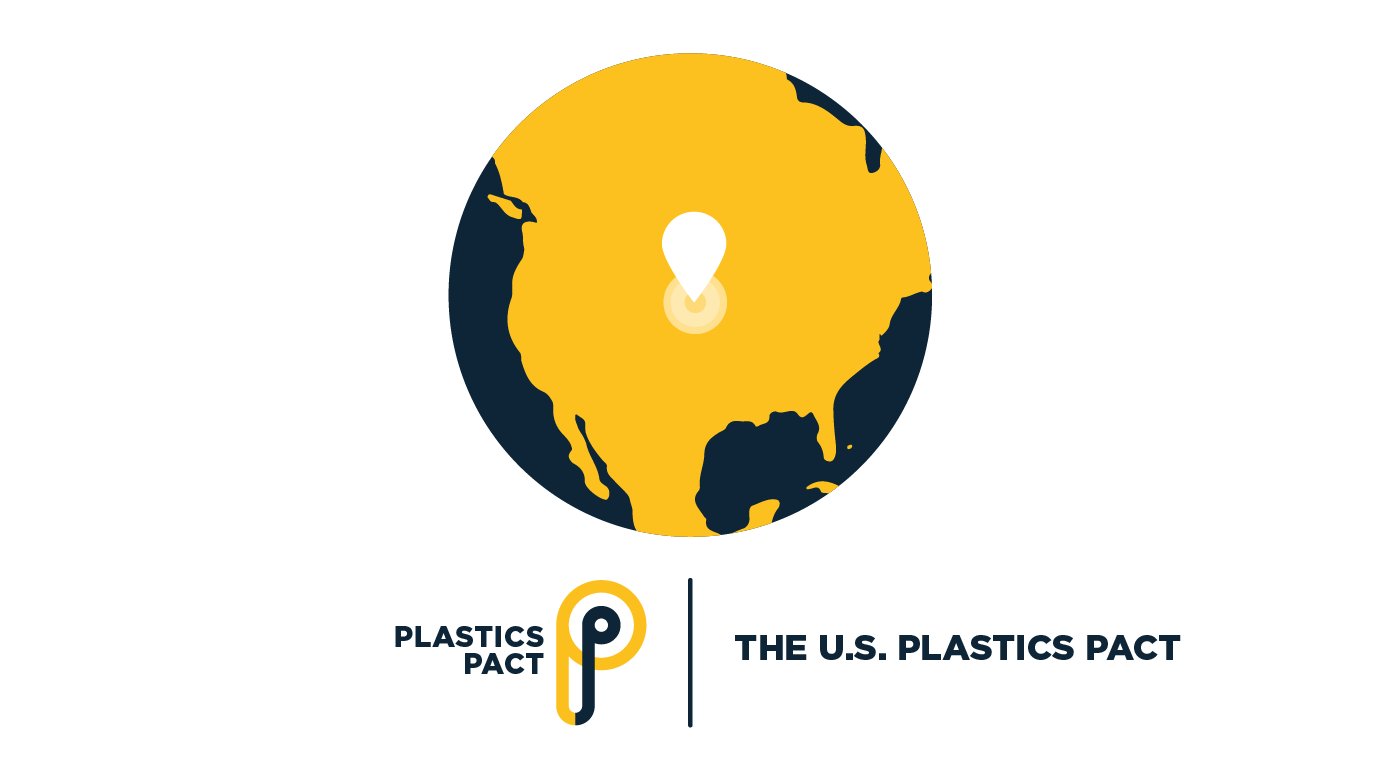By 2050, oceans may have more plastic than fish if we don’t change the business relationship we currently have with this material globally.
Single-use plastics are present in virtually every industry. We make constant use of this highly polluting material in marketing, construction, energy, health, entertainment and even in technology.
This situation is worsened by a popularized capitalist culture of immediacy that rewards the single use and subsequent disposal of goods.
However, with this same culture, campaigns promoting the reduction of individual plastic consumption have also become popular around the world. The problem is that the current impact is so great that such sustainable initiatives alone are not enough.
If these strategies are not implemented on an industrial mass scale, their effect will be practically useless.
That is why initiatives such as the U.S Plastics Pact of the Ellen MacArthur Foundation and WWF are emerging. This pact combines businesses, government entities, NGOs, research institutes and other investors to work collectively to build a vision of a Circular Economy around single-use plastic..
In Colombia, ANDI also proposed a bill to regulate single-use plastic. The bill was approved in the senate on September 2 and proposes to achieve the elimination of single-use plastic by 2030. It also specifies that by 2025, products made with plastics must be recyclable or composed of at least 90% recyclable material.
The same trend is becoming visible across Latin America with similar projects. At the close of the last Pacific Alliance, held in Lima 2019, Francisco Restrepo, the Chancellor, expressed the Alliance’s intention to carry out common campaigns to ban single-use plastics in Chile, Colombia and Peru.
Such efforts have produced results this year with laws similar to Colombia’s in México, Argentina y Chile by 2021.
Likewise, and being aware that the responsibility of taking care of the planet to ensure a future belongs to all of us, we at GLASST Innovation Company focus on marketing more and more innovative products that contribute to sustainability and protect the environment, and improve your projects’ effectiveness.
Products such as our Universal Protector precisely replace single-use plastics. However, first, to understand how these actions affect the environment, we will explain how the pact works in the United States and the purpose of these initiatives throughout the world.
Later, we will also tell you how they affect the construction industry and the role we have to play in them.
What is the U.S. Plastics Pact for?
The ultimate goal of the U.S. Plastics Pact is to ensure that plastic does not become waste by eliminating unneeded plastic use, innovating to ensure that what is absolutely necessary is reusable, recyclable or compostable. and circulating used plastic objects to keep them in the economy and out of the environment.
This implies on the one hand cross-cutting participation and commitment from all industries that use the material, as well as the creation of clear measurable achievable goals.
To do so, the pact is based on creating a circular economy that focuses on four objectives to be met in the following guidelines :
1. Define a list of plastic packaging that must be declared hazardous or unnecessary by 2021 and take steps to eliminate them by 2025
All problematic or unneeded plastic that does not have a potential plan to be converted to recyclable or recyclable material should be eliminated from the U.S. market.
The same target has been proposed for Latin American markets with different timeframes.
In Colombia, by 2025, 90% of plastic must be recyclable and by 2030 the use of this material must be totally eliminated. Mexico has approved the elimination of the material starting 2021. Meanwhile, this year, Chile passed a law to eliminate the use of plastics within a 6-month time frame.
2. By 2025, 100% of the plastic used must be recyclable, compostable or reusable.
All companies associated with the pact must implement recyclable, reusable or compostable solutions to serve their customers. This applies to both B2C and B2B businesses, including restaurants, large supermarket chains, retailers and e-commerce, among others.
To do so, the pact provides its members guidance to understand how the disposal process. It also requires that such disposal be supported and demonstrated at scale for industrial processes with measurable procedures.
3. Conduct ambitious actions to recycle and compost 50% of packaging plastic by 2025.
Achieving this goal implies that companies must be accountable for everything they can control in the disposal process of the plastics they use in their processes.
It also includes ensuring equal access for individuals to recycle at home, work, school, and in public and commercial spaces.
Likewise, compliance supervisors must work to ensure that plastic is reused in specific minimum percentages depending on the composition of a plastic. This is based on the premise that there is an end market for all the materials listed in the document, and therefore, possible buyers.
4. By 2025, have a 30% average of recycled, responsibly sourced or bio based material.
The covenant prioritizes the use of reused or post-consumer plastic with at least 30% of the use of this material as a minimum measure.
To ensure compliance with these objectives, the pact has established six evaluation areas responsible for generating compliance strategies for each area, as well as evaluating the progress of the pact.
These areas are Outreach and data, Policy and the covenant, Problematic materials, Reporting, Recyclability design, and New business models. Additional areas are added as needed.
What do we do at Glasst to contribute to these types of initiatives while taking care of your projects?
It is not uncommon to see plastic products used on construction sites to protect facades, finishes and/or glass. These materials take approximately 1150 years to degrade ,150 years to degrade, and they represent a high volume of final construction site waste.
The construction industry is responsible for 23% of the plastic waste generated and is the second largest consumer of plastic in the world. This means the construction industry has a great responsibility to ensure proper plastic waste disposal.
In a housing project, the blue plastic used equals 19,000 plastic bags, 40,800 cups and 646,000 straws. While black plastic equals 108,000 plastic bags, 226,000 cups and 3,600,000 straws.
That is why at Glasst Innovation Company, we are constantly creating innovative products that challenge industries to take care of the planet and your business.
Among these, we highlight our Universal Protector, an easily removable film that allows you to protect finishes and surfaces in your projects, replacing industry’s typical single-use plastics.
This product is compostable and biodegradable, and takes only 3 to 5 years to decompose, while common plastics can take up to 150 years to decompose.
Additionally, it can be used in the construction, automotive, electronics, health and other industries, as it is a safe product for people’s health and the environment.
This product’s compostable and biodegradable features contribute to savings of up to 50% in cleaning time at the end of your work, improving after-sales budgets and contributing to the number of LEED and CASA sustainability certification points.
With this and other products committed to being environmentally friendly, Glasst continues to offer solutions for your projects that will also contribute to your results and resource savings. Learn more about how we can help you by reading more about our portfolio.







